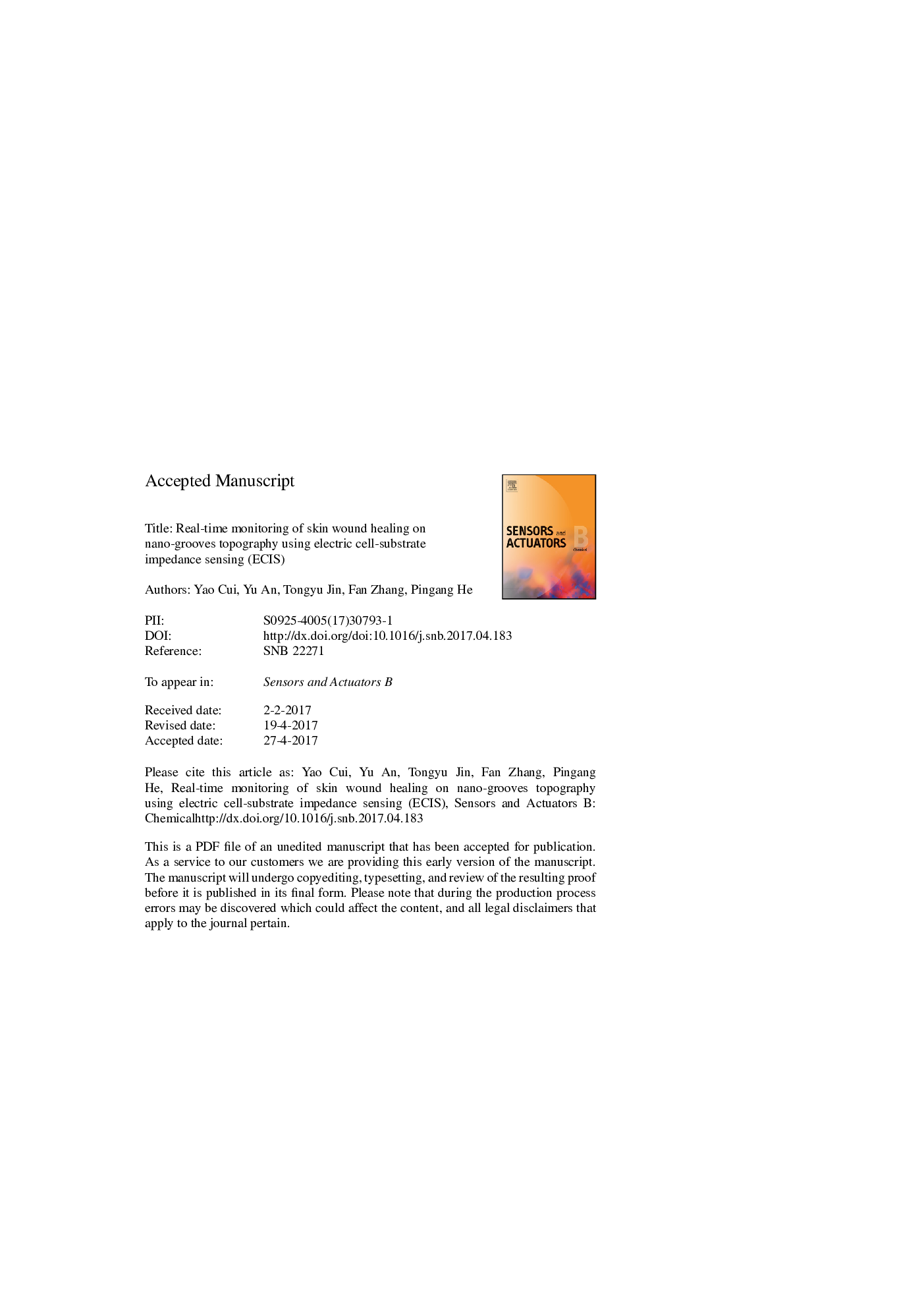| Article ID | Journal | Published Year | Pages | File Type |
|---|---|---|---|---|
| 5008799 | Sensors and Actuators B: Chemical | 2017 | 23 Pages |
Abstract
Skin wound healing represents a critical medical topic. For its ideal case, the injured tissue can repair quickly without scars. In this paper, an ECIS device was developed using nano-grooves to simulate internal extracellular matrix (ECM) with 75Â nm in depth and 200Â nm in width of grooves and ridges. HFF and HaCaT cells were cultured but only HFF cells could orient along the nano-grooves. In the cell migration and proliferation occurred during the wound healing, HFF and HaCaT cells both presented increased normalized impedance (NI) values at the characteristic frequencies of 977Â Hz and 1465Â Hz, respectively. Compared to flat electrodes, nano-grooves electrodes generated less intense impedance signals in HFF cell migration and proliferation, and HaCaT cell migration, but more intense ones in HaCaT cell proliferation. Cell images were captured simultaneously and the statistical analysis demonstrated that the nano-grooves electrode could accelerate the migration while slow down the proliferation. After establishing the correlations between impedance response and cell behaviors, it could be found that the NI values increased all linearly the rising of recovery degree and cell number. Under the equal changes of recovery degree and cell number on nano-grooves, HFF cells produced the both declined impedance signals, because of the elongation, while, HaCaT cells created the same and deduced NI variation rates, due to the unchanged morphology and aggregation growth, respectively. Our work provides a useful approach for the clinical monitoring of skin wound healing in a real-time and label-free manner, potentially promoting the development of regenerative medicine.
Related Topics
Physical Sciences and Engineering
Chemistry
Analytical Chemistry
Authors
Yao Cui, Yu An, Tongyu Jin, Fan Zhang, Pingang He,
